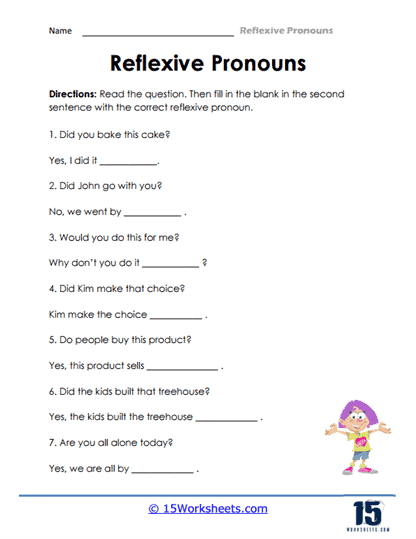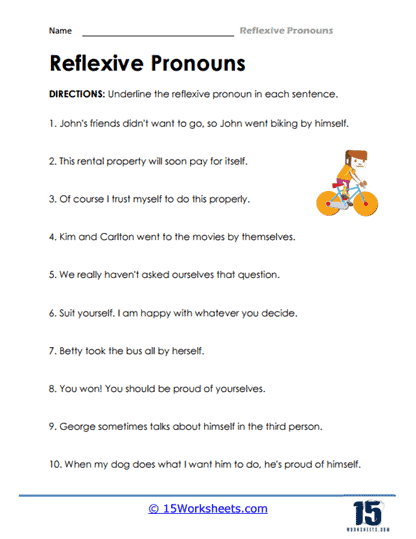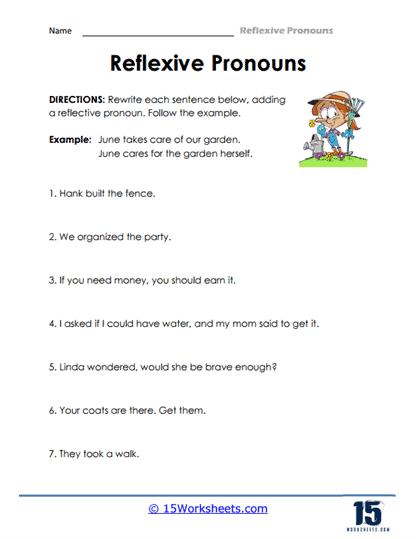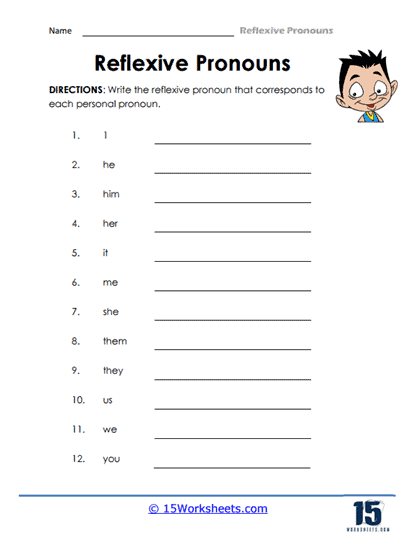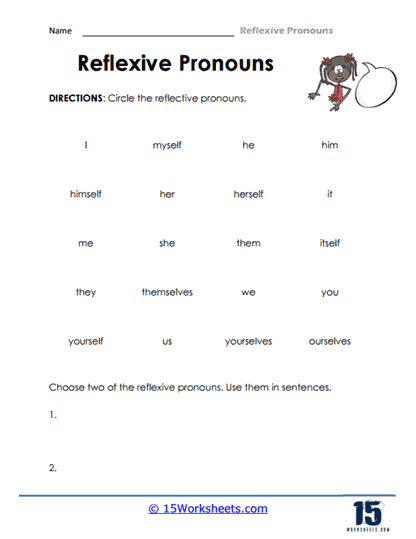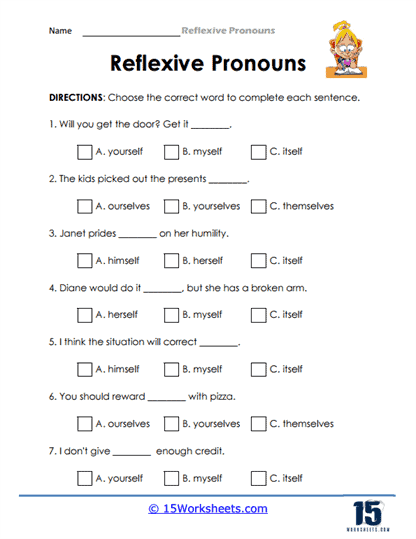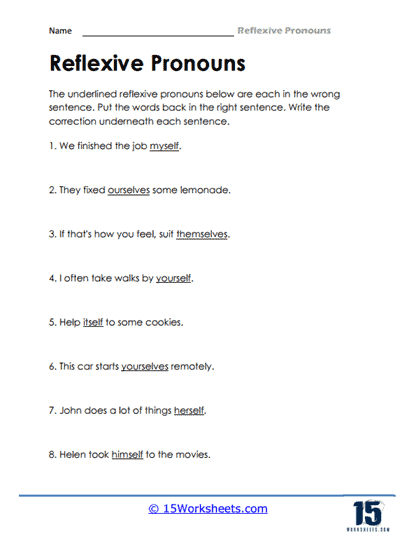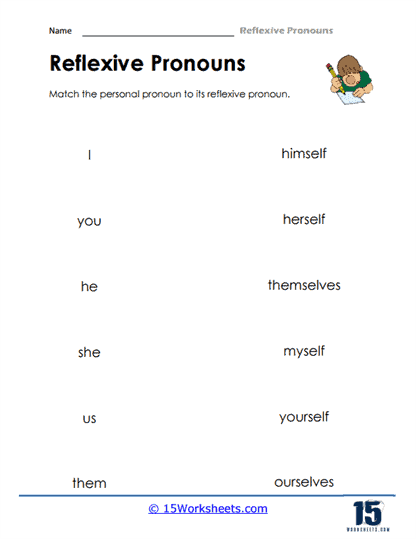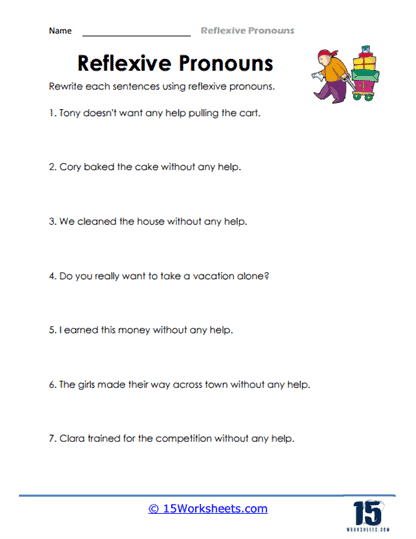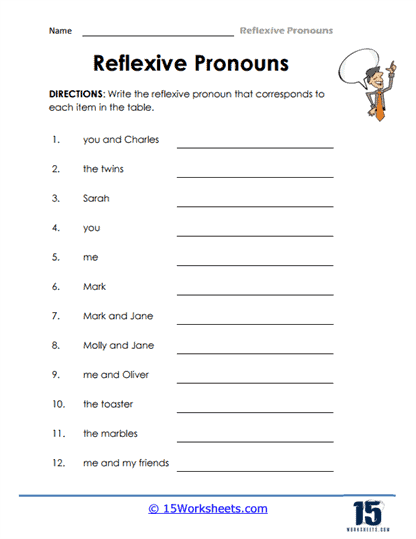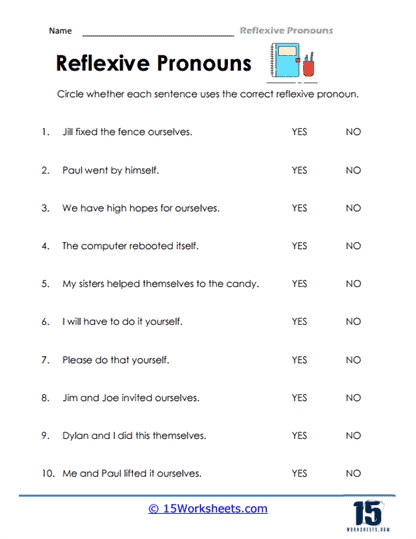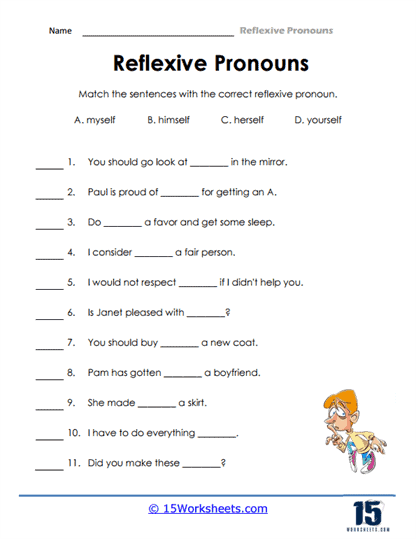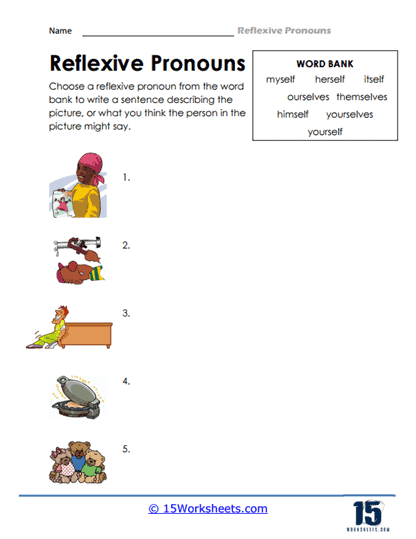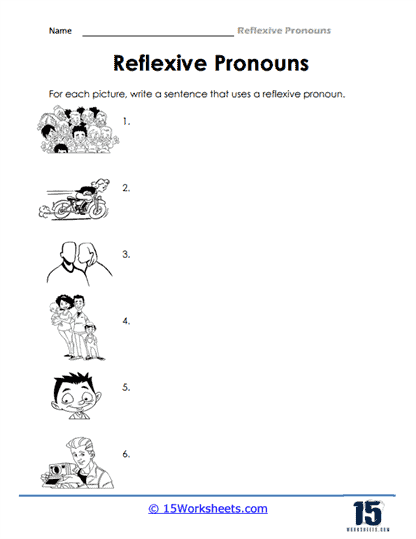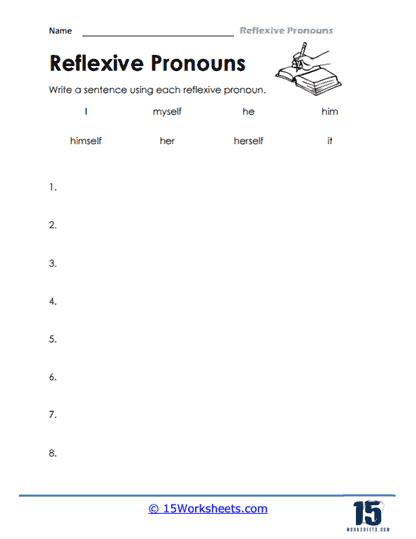Reflexive Pronouns Worksheets
All About These 15 Worksheets
These reflexive pronouns worksheets are valuable resources for teaching and reinforcing this important aspect of English grammar. A reflexive pronoun is a pronoun that refers back to the subject of the sentence and ends in “-self” or “-selves.”
These worksheets include examples and exercises to help students identify reflexive pronouns in sentences and use them correctly. They also include a wide range of activities such as filling in the blanks with the correct reflexive pronoun, rewriting sentences to include reflexive pronouns, and writing exercises. Through these worksheets, students will:
- Complete sentences by supplying them with the correct reflexive pronoun;
- Identify reflexive pronouns in sentences;
- Rewrite sentences to include correct usage of reflexive pronouns;
- Be familiar with the reflexive pronouns that correspond to their matching personal pronouns;
- And write their own sentences using reflexive pronouns correctly.
By completing these worksheets, students can develop a better understanding of how reflexive pronouns work and how they can be used to add emphasis or indicate that the subject and object of a sentence are the same. This can help them improve their writing and communication skills and avoid common errors in pronoun usage.
What is a Reflexive Pronoun?
When the subject and the object of a sentence are the same, reflexive pronouns are employed. For instance, “She went to the hospital by herself.” In this instance, “she” is the sentence’s subject. Taken is the verb here. Who did she take, though? The answer is “herself,” which is a fantastic example of a reflexive pronoun in action. Take note of how frequently these pronouns are employed as you explore them.
Using Reflexive Pronouns
People frequently use reflexive pronouns incorrectly since they aren’t frequently studied. When they are not necessary, many writers use them in inappropriate ways. People often choose to use reflexive pronouns when they are not necessary because they believe them to be more formal. Your sentence’s grammar and meaning won’t always be ruined by this.
It may, however, very quickly lead to issues. Simply compose the statement using both if you are ever unsure about whether to use a reflexive pronoun. In most cases, the finest choice will stand out to you as being the correct one. Taking the verb and the object together is another technique to make this problem simpler. If they disagree, you’re probably utilizing the incorrect kind of pronouns.
Reflexive pronouns can stress nouns or pronouns that come before them in addition to their usual usage. For example; only she; herself; was capable of completing the task. As you can see, by employing a reflexive pronoun, you give the sentence’s subject drama and importance. Because of this, reflexive pronoun are frequently utilized in this context in literary works. This kind of reflexive pronouns informs the reader that the person being described has some noteworthy or unique qualities. In conclusion, reflexive pronouns can be used to emphasize nouns or pronouns even though they should only be used for their designated function.
Gender-Neutral Pronouns
You may regard yourself to be an authority in grammar. And if you do, you might have observed that the subjects in each of the previous phrases tended to be a bit conceited. How do we interpret that? Pronouns are used to replace nouns in sentences when necessary. We use a particular kind of pronoun called a reflexive pronoun when the same noun serves as both the subject and the object.
It’s crucial to avoid mistakenly identifying someone by using gendered terminology when it’s not necessary. Fortunately, using gender-neutral terminology is a simple approach to guarantee that your speech and writing are inclusive of all gender identities. The phrases themselves or oneself are what you require if you are unsure of the correct reflexive pronoun to employ or would prefer not to use one.
The pronouns themselves or oneself can be used in place of the gender-specific pronouns himself and herself as a solitary gender-neutral or non-binary alternative. Although other words can be employed in this manner, themselves and themselves are the most typical. When it’s not necessary or desired to state a person’s gender, the pronouns themselves or oneself might be used. These are also used whenever one refers to someone who identifies themselves as non-binary.

